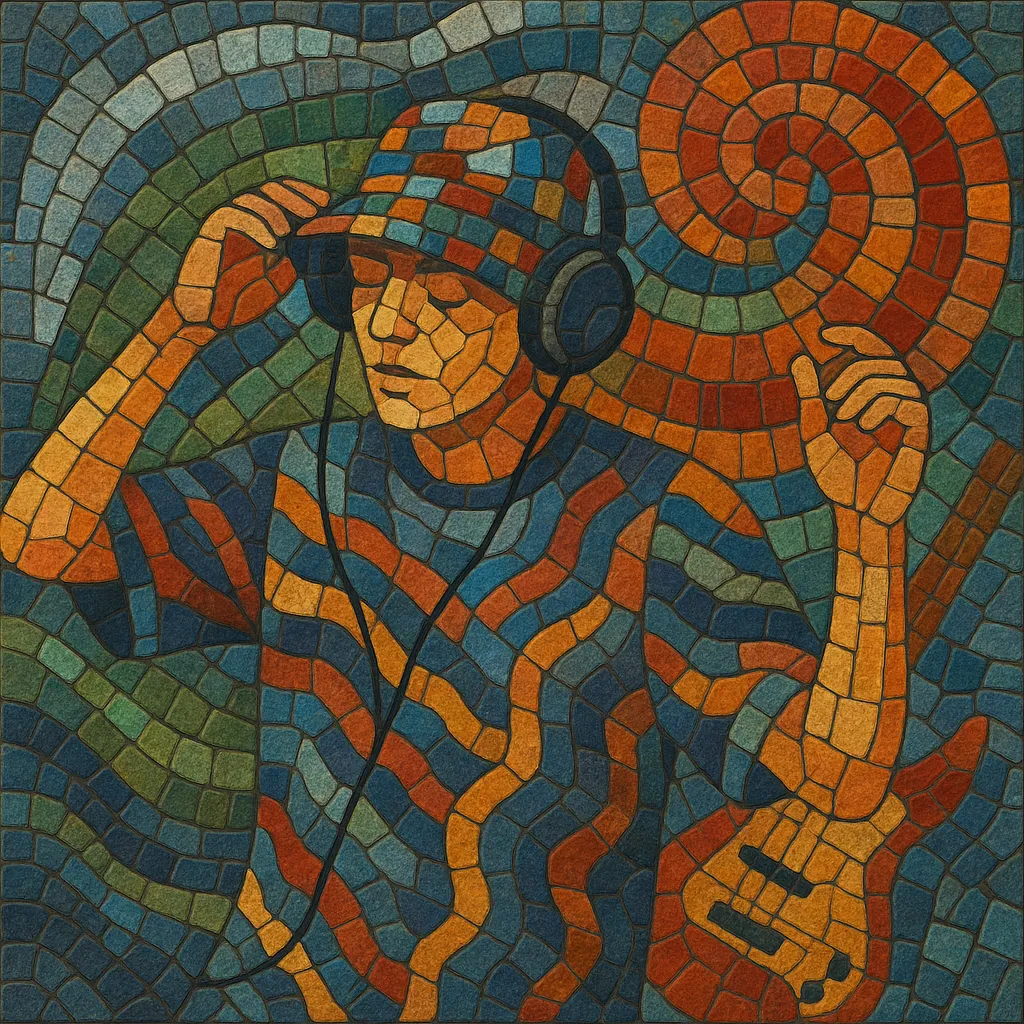Baggy is a British indie‑dance style that bloomed around the turn of the 1990s, blending jangly psychedelic guitar pop with the rhythms and production sensibilities of house and acid house. The name comes from the loose "baggy" clothing, bucket hats, and casual, rave‑friendly fashion associated with the scene.
Musically, baggy favors mid‑tempo, danceable grooves (roughly 110–125 BPM), rolling basslines, bright guitar lines with chorus/wah, Hammond/Farfisa‑style organs, and shuffling drum feels that borrow from both four‑on‑the‑floor house and breakbeat patterns. The overall mood is euphoric and communal, reflecting the influence of club culture, especially Manchester’s Haçienda. Its songs often emphasize groove, repetition, and hooks suitable for both live indie gigs and dance floors.
The roots of baggy lie in the UK’s late‑1980s cross‑pollination between indie guitar bands and club culture. Manchester’s Haçienda, Factory Records, and the broader acid house explosion encouraged bands to stretch beyond post‑punk and neo‑psychedelia into dance rhythms. Early signposts include The Stone Roses’ "Fools Gold" (1989) and Happy Mondays’ work with producer Paul Oakenfold, which showed how jangly guitars and funk‑leaning basslines could lock to a house‑style groove.
Baggy quickly developed into a recognizable sound and style: shuffling, mid‑tempo beats; looping basslines; organs and trebly guitars; and lyrics about nightlife and hedonism. The press (NME, Melody Maker) popularized the term "baggy," which also described the scene’s fashion—loose trousers, bucket hats, and rave‑ready attire. Key releases by The Stone Roses, Happy Mondays, The Charlatans, Inspiral Carpets, and The Farm pushed the sound nationwide, while events like The Stone Roses’ Spike Island (1990) symbolized its cultural moment.
Though often tied to "Madchester," the style extended to Liverpool and London acts (e.g., The Farm, Flowered Up) and kindred indie‑dance experiments across the UK. Bands frequently embraced Balearic tastes, sampling, and club‑oriented production touches, blurring lines between live indie shows and DJ‑driven nights.
By 1991–1992, the scene’s momentum waned amid shifts toward grunge, harder rave sounds, and changing industry tastes. Yet baggy’s fusion of indie songcraft with dance rhythms set the stage for later UK movements: it directly fed the early phase of Britpop (e.g., early Blur), informed dance‑rock revivals, and anticipated 2000s crossovers like new rave and indietronica. Its influence endures in the UK’s enduring comfort with guitar‑led bands that groove like club records.
Aim for 110–125 BPM. Use a steady, danceable pulse with a slight shuffle. Alternate between four‑on‑the‑floor house kicks and laid‑back breakbeat feels. Keep hi‑hats lively and syncopated, and emphasize a rolling, repetitive bassline that locks to the kick.
Favor modal or simple diatonic harmony (I–IV–V or I–♭VII–IV is common). Use jangly, bright guitar voicings with chorus, mild overdrive, or wah. Organ chords (Hammond/Farfisa timbres) add warmth and continuity across sections. Write vocal hooks that are chant‑able and groove‑centric rather than complex.
Combine live drums with drum‑machine or sampled layers (808/909 flavors). Add subtle acid house/Balearic touches: filtered loops, percussive samples, or tape delays. Keep the bass forward and round, guitars crisp, and keyboards slightly saturated. Use room reverb to evoke a live club feel.
Build around grooves and motifs; let sections evolve via layering (e.g., bring in organ swells, extra percussion, or backing vocals). Keep breakdowns sparse to spotlight bass and drums, then lift back into the full band for payoff choruses.
Write about nights out, camaraderie, euphoria, and street‑level observations. The vocal delivery can be relaxed and conversational, with memorable refrains suited to crowd sing‑alongs.


